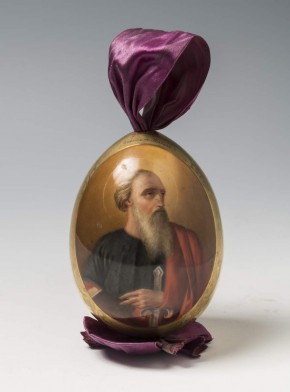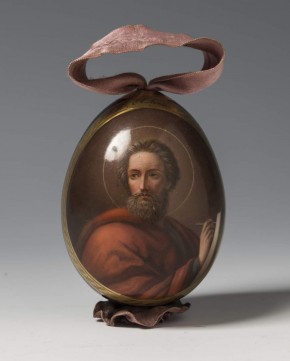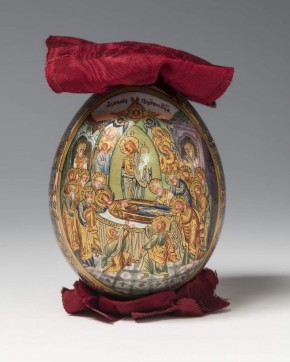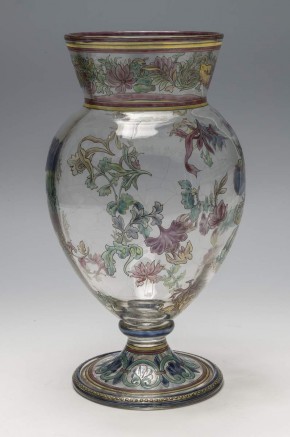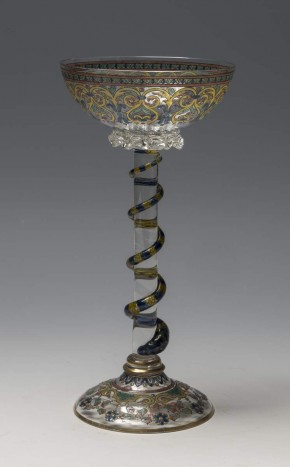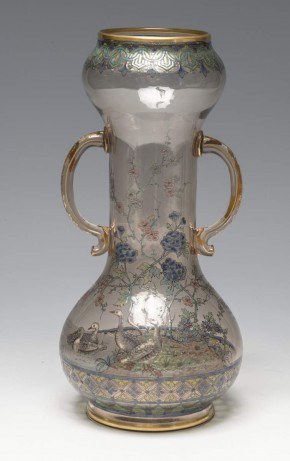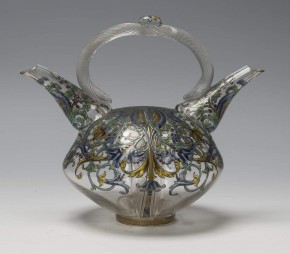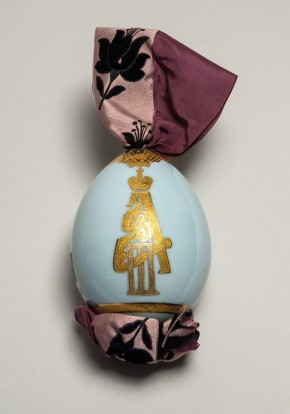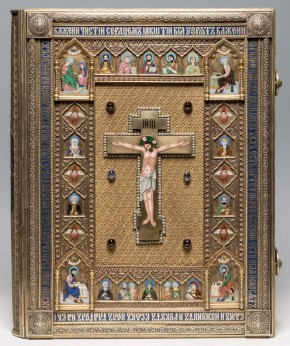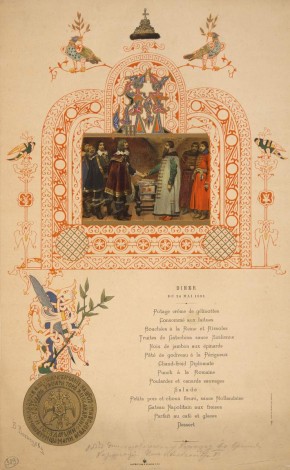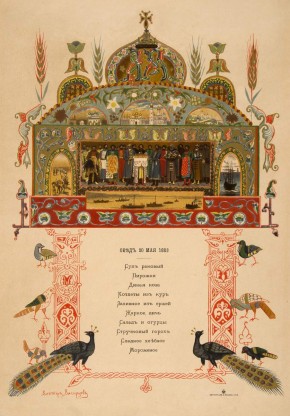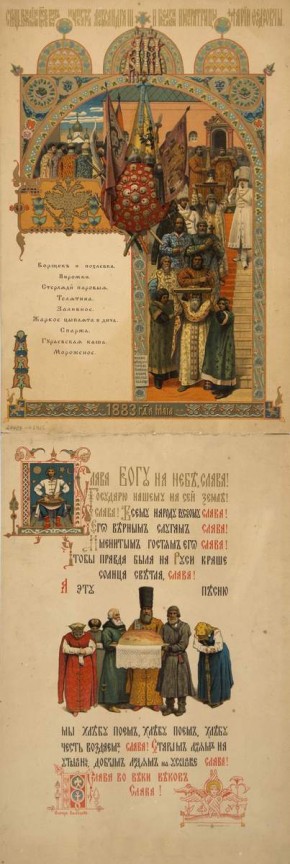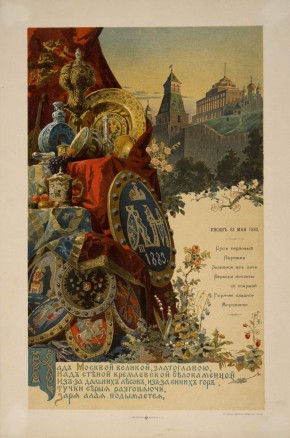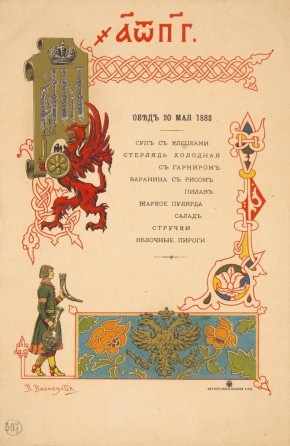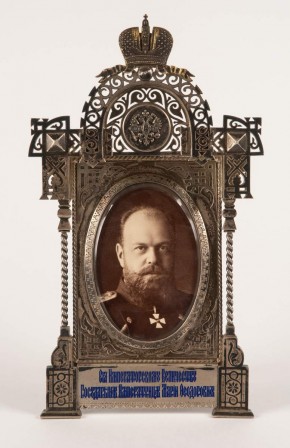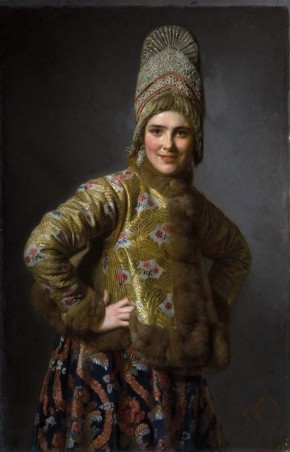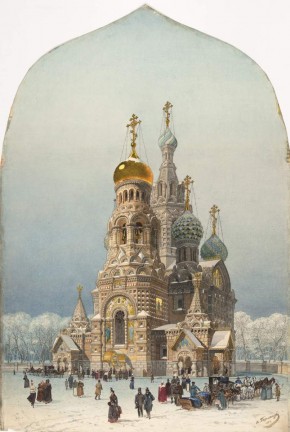«russian style»
The term “Russian style”, with respect to both architecture and the applied arts, came into active use in the first days of Alexander III’s reign. The spread of the Russian style was intended to propagandize patriotism and fortify the national consciousness. From its very start, the style vied for a role in the art of all classes of society; it was used in decorating unique creations and mass produced items.
Russian style was mandatory for all official festivities, the most important of which were the coronation celebrations of 1883. The national style was used to decorate menus, loyalist leaflets, and interiors for musical evenings or masquerades. The style was officially supported with multiple artistic competitions organized by various government agencies and educational institutions.
Widespread fascination with the culture of pre-Petrine Rus’ led to the proliferation of the “boyar” theme in art, understood as partially fantasy and partially historically reconstructed from Ivan Zabelin’s books about the lives of Russian tsars before Peter. Count Sergei Sheremetev founded the Society for the Revival of Old Russian Dress, and aristocrats began sporting fashions similar to those worn by the boyars of old.
The architectural predilections of Alexander III, champion of the Russian style, were formed in his youth in travels to the cities on the Volga as he gazed in amazement at the ornamentation of the 17th-century tile-covered churches. The pinnacle of the Russian style in architecture was the Church of the Resurrection of Christ (the Church on Spilled Blood) in St Petersburg, erected on the site where Emperor Alexander II received his fatal wound. It was designed by architect Alfred Parland and Archimandrite Ignatius of the Trinity-St Sergius Coastal Monastary. The church’s decorative details were not exact copies of older decorations, but were creatively reworked by the architect into an original arrangement. To adorn the façades and interiors, Parland generously used artistic mosaics executed according to original designs by Viktor Vasnetsov, Mikhail Nesterov, and other well-known artists influenced by art nouveau.
The Byzantine style, however, which emerged somewhat earlier, did not fall out of use during Alexander III’s reign. This is in part explained by the ongoing construction of the St Vladimir Cathedral in Kiev, which had been designed in the Byzantine style. Konstantin Pobedonostsev, chief procurator of the Synod and one of the leading ideologues of the era, considered St Vladimir Cathedral to be the most important monument of Alexander III’s era. Alexander himself personally examined and approved the sketches for the decorations made by Viktor Vasnetsov. If the Russian style emphasized imperial St Petersburg as a continuation of the holy Moscow tsardom, the Byzantine style underscored its heritage from Constantinople and Kiev, the first Christian capital of Rus.
